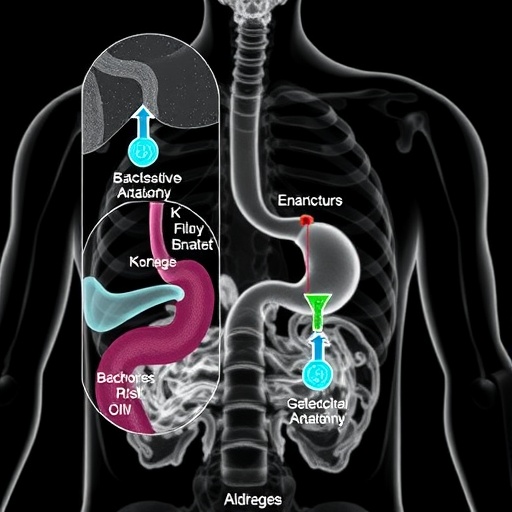
Credit: Insel Gruppe
The incidence of surgical site infections after an operation is an important quality indicator for hospitals. An overview from six European countries published in 2017 documented increased costs and, in some cases, significantly poorer surgical outcomes due to SSIs. The European Center for Disease Control (ECDC) and authorities in the U.S. have therefore defined criteria for recording and documenting the rate of surgical site infections per procedure. Swissnoso has issued binding guidelines for Switzerland based on these criteria. The study investigated to what extent surgical site infection rates correlate with the audit results in Swiss hospitals.
Seek and you shall find: low SSI rates with low audit score
The study was able to establish a clear correlation between a low surgical site infection rate and the results from on-site surveillance quality audits (audit score). The better a hospital scored on the 50-point audit, the more infection cases had been detected or reported. This was true for all three surgeries studied (knee and hip implants as well as colorectal surgeries). According to the study’s lead author Andrew Atkinson: “The study shows that the quality of the respective surveillance systems must be systematically considered when interpreting surgical site infections – and this independently of the type of surgery and infection rate.”
What exactly was measured?
The study analyzed 81 957 hip and knee surgeries from 125 hospitals and 33 315 colorectal surgeries from 110 hospitals. At least two external audits per hospital were carried out to assess surveillance quality. The study was based on the Swissnoso guidelines. The detailed audit results were ranked in an overall score between 1 and 50. The audits were carried out by three specifically trained investigators.
Results in detail
The following values refer to the median of the results. The SSI rate for knee and hip implants was 1.0% with an audit score of 37. As expected the infection rate for colorectal surgery was much higher at 12.7% with a slightly higher audit score of 38. It appeared that higher infection rates correlated with higher audit scores. A discernible range of scores among hospital types could be observed, with private hospitals forming a cluster in the lower range of audit scores and infection rates.
How can a possible systematic error be corrected?
The research team makes a specific proposal for future evaluations and national comparisons of surgical site infection rates. A computational correction (normalization) and inclusion of the audit score are proposed for discussion. Prof. Jonas Marschall summarizes: “For the first time, this study provides us with a basis for rendering the number of infections more comparable and better understood throughout Switzerland. Now we have to work hard to establish regular comparisons among Swiss hospitals even more meaningful and the incentive to be at the forefront even greater.”
###
Media Contact
Marcel Wyler
[email protected]
Related Journal Article
http://dx.





